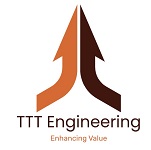- Home
- Fabrication and Erection
Fabrication and Erection
Fabrication and Erection
Fabrication and Erection are two critical processes in the construction and industrial sectors, particularly in structural steelwork, pipelines, and equipment installations. Here’s an overview:
Fabrication
Fabrication refers to the manufacturing or assembly process where raw materials, typically metal, are cut, shaped, welded, and prepared into components or structures as per design specifications.
Key Steps:
Design and Planning:
- Development of detailed shop drawings and blueprints.
- Selection of appropriate materials based on load requirements and environmental conditions.
Material Preparation:
- Cutting raw materials using techniques such as plasma cutting, laser cutting, or sawing.
- Forming and bending to create desired shapes.
Assembly
- Assembling components as per the design.
- Tack welding to temporarily hold parts in place.
Welding and Joining:
- Final welding of the parts to ensure structural integrity.
- Use of methods like MIG, TIG, or arc welding.
Finishing:
- Surface treatments like grinding, painting, or galvanizing to protect against corrosion.
Quality Control:
- Dimensional checks, weld inspections, and material testing.
Erection
Erection involves assembling and installing fabricated components at the construction site.
Key Steps:
Site Preparation:
- Clearing and leveling the site.
- Setting foundations or anchor points for the structure.
Component Delivery:
- Transporting fabricated parts from the workshop to the site.
- Ensuring safe handling during transport.
Assembly:
- Assembling components using bolts, welds, or other joining methods.
- Sequencing based on stability and site constraints.
Alignment and Leveling:
- Ensuring precise alignment of components.
- Use of laser levels and theodolites for accuracy.
Lifting Operations:
- Using cranes, hoists, or other machinery to lift components into place.
- Rigging safety measures to prevent accidents.
Final Installation:
- Securing all joints and connections.
- Inspecting the structure for alignment, stability, and compliance.
Common Applications
- Structural steel frames for buildings and bridges.
- Pipelines in the oil and gas industry.
- Industrial equipment and machinery installation.
- Storage tanks and pressure vessels.
Safety Considerations
- Ensuring all personnel are trained in fabrication and erection processes.
- Use of personal protective equipment (PPE).
- Adherence to industry standards and codes, such as AWS (American Welding Society) and OSHA (Occupational Safety and Health Administration) guidelines

